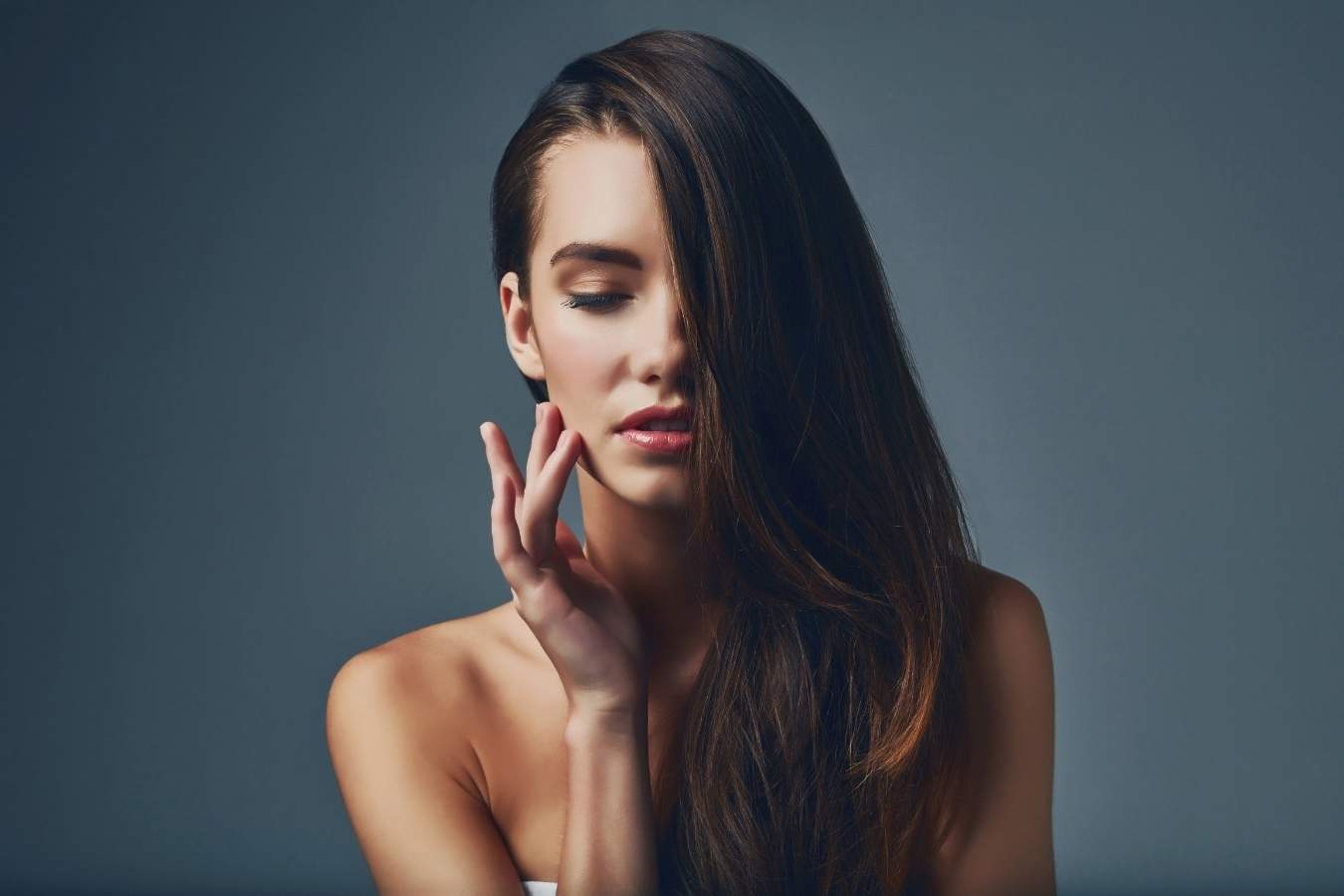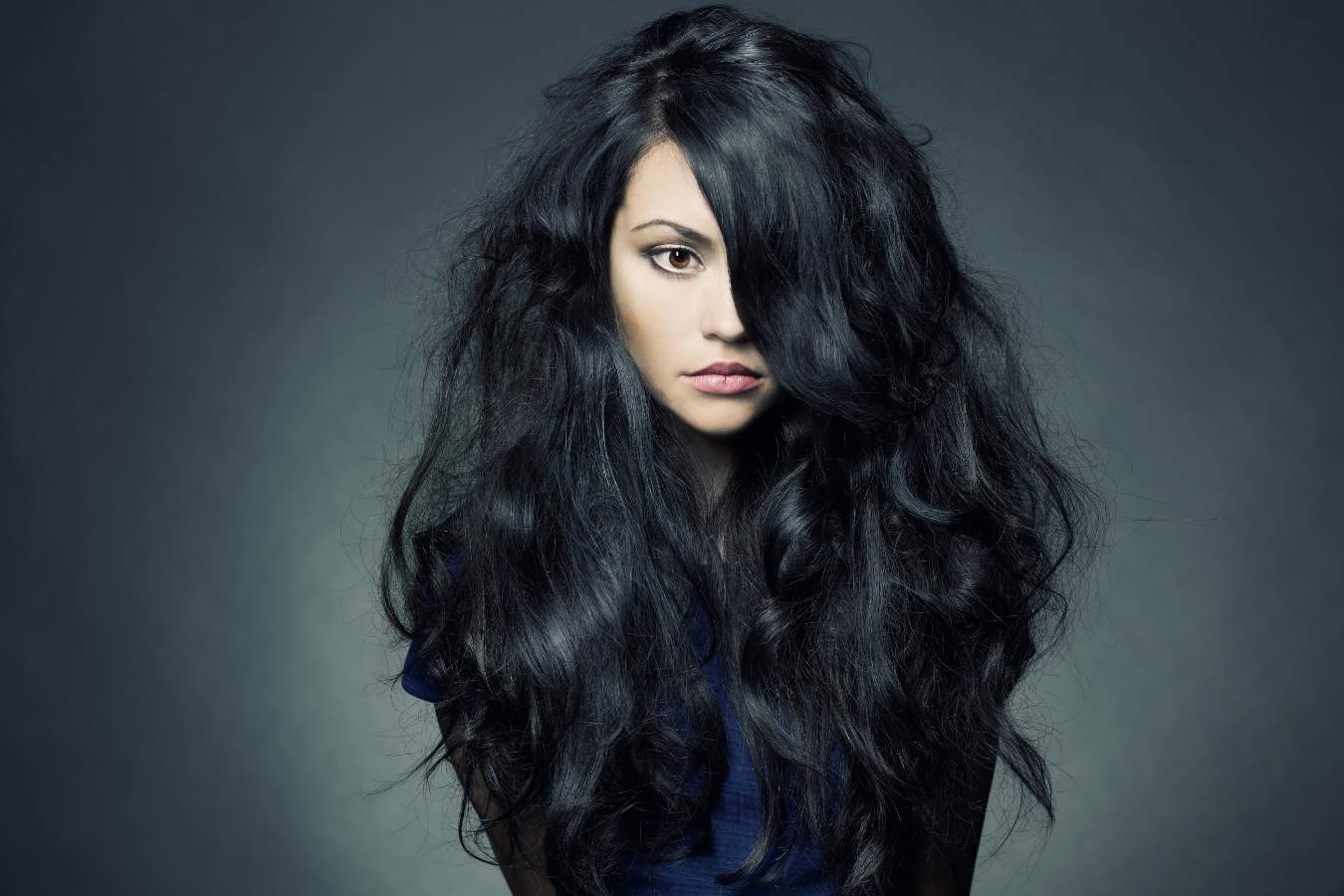Lots of factors can influence your hair. In this article, we will look at how dye affects hair and if dyeing hair black will stop it from growing.

Dyeing your hair black will not stop your hair from growing, nor will it slow it down. However, it can result in some hair loss by damaging the color-treated hair. Hair dye contains chemicals that can result in damage to the hair.
Hair dye cannot access the hair growing beneath your scalp, so it can’t do any damage to hair that has yet to grow.
How Dyeing Affects Your Hair
Permanent hair dye contains the ingredients ammonia and peroxide. The ammonia swells, opening the hair cuticles.
This allows the dyes and peroxide to get inside, resulting in a color change.
This alteration in the integrity of the hair makes colored hair weaker and more porous. All of this combines to make dyed hair more susceptible to breakage.
Both ammonia and peroxide can loosen hair in the telogen phase.
Coloring your hair also requires a lot of manipulation of the hair in the form of heavy combing and rubbing.
This can contribute to hair loss because this manipulation can loosen the hair treated with dye.
Will Dyeing My Hair Black Stop It from Growing?

While dying your hair black won’t stop your hair from growing, if your hair is exposed to harsh chemicals like ammonia and peroxide on a regular basis, it can increase shedding.
There’s also the rubbing motion that comes with dyeing your hair. This can loosen hair in the telogen phase which can lead to hair fall.
Possible Reasons Your Hair Isn’t Growing
There are a few factors that can affect the growth of your hair:
Vitamin Or Mineral Deficiency
In order to promote long, lustrous locks, good nutrition is paramount.
Multi-mineral supplements are effective for healthy hair growth. They should contain iodine, zinc, and selenium.
After a daily dose for three months, you should notice a difference.
Aside from popping a supplement, it is important to evaluate your diet overall. Make sure you’re getting enough good fats and plenty of protein.
Amino acids in protein build strong hair cells, while good fats nourish those cells.
Load up on citrus fruits, peppers, and strawberries for a Vitamin C kick. This boosts the production of collagen which keeps hair strong and vital.
Lack of TLC For The Scalp
It is important to keep the whole picture in mind. Don’t get so preoccupied with your hair, that you forget that the scalp needs plenty of care too.
A healthy scalp means healthy hair.
Make sure you use the right shampoo for your scalp and avoid over-exposure to the sun.
Brushing your scalp promotes healthy hair growth by encouraging blood to the surface and shifting sweat and oil build-up away from the hair follicles.
This allows the scalp room to breathe.
Split Ends
If your hair appears to be growing, but you’re not seeing it go past a certain point, then split ends could be to blame.
Split ends are usually a result of coloring or excessive heat styling. One strand of hair splits and then splits again causing frayed ends which wear away to nothing.
While it might feel counterproductive if you are trying to grow your hair, the best way to tackle split ends is to get a regular trim.
This avoids the split working its way up the strand which leads to weakened hair.
Getting rid of these pesky split ends will actually help your hair grow longer in a shorter space of time.
You should also try to avoid rough towel drying as this can cause split ends. Instead, squeeze excess water out of the hair.
In the ongoing battle against split ends, it is also important that you use a heat protectant before you use heat to style your hair
Leave-in conditioners are a good way to hydrate and nourish your dehydrated, overwrought hair effortlessly.
Heat And Chemical Exposure
Too much heat and too many chemicals can lead to split ends.
Chemicals, coloring, and heat exposure can all lead to a depletion in the hair’s moisture levels.
The answer?
Nourish, nourish, nourish!
Make sure you incorporate deep conditioning treatments to your haircare routine in between salon visits.
As well as moisture, your hair also needs protein for strength. Try to incorporate this into your routine also.
Resting Phase
Hair grows in a three-phase cycle: anagen, catagen, and telogen. The telogen phase is the resting phase for hair. If your hair is in this phase, it is released and falls out.
Each hair follicle does this separately, so they go through this three-phase cycle at different points in time.
A healthy head of hair tends to shed 50 to 100 hairs per day- this is totally normal.
So, at any given point in time, some of your hairs will be in the ‘resting’ phase. This means they will not be growing.
However, it isn’t a cause for concern. They are simply making room for new hair growth.
Will Bleaching My Hair Stop It from Growing?

Bleaching or lightening hair is, possibly, the harshest way to color your hair.
In spite of this, if you undergo this process regularly, any hair loss is likely down to breakage due to a loss in elasticity, and not an actual permanent loss.
However, it is a possibility, if you repeatedly apply bleach to your scalp and not just your hair.
If you are bleaching your hair, it is advised that you use an experienced colorist. They will be able to guide you on ways to prepare your hair before and ways to care for your hair after.
This can all help to minimize any potential damage.
How to Go Back to Your Natural Hair Color
There may come a point when you make the decision to go back to your natural hair color.
We have put together a few hints and tips to guide you through the process:
Colorist
First things first, it is a good idea to consult a professional colorist. This will give you the opportunity to discuss your hair needs and your hair goals for the future.
If you can manage it, you could let your hair grow out for a few months prior to this consultation so the colorist can see what they are working with.
Slow Transition Back To Natural
If it’s just a few highlights, then transitioning back to your natural shade will be fairly straightforward.
Simply allow it to grow out and enjoy that ombre look until regular trims even out your shade.
You may want to add a few natural highlights or lowlights to soften up any harsh lines as you transition.
An alternative is to gloss your hair to replicate the color of your roots.
This is especially effective if you are coming from a starting point of highlights or balayage. It allows the natural root to blend as it grows.
Grow The Tint
Your colorist may decide that the best course of action is a ‘tint back’. This is coloring your hair to a shade as close as possible to your natural shade.
During this process, a filler is applied to replace the pigments that your darker color will require.
A filler is a semi-permanent color applied prior to your permanent color, usually an orange or copper shade.
Some fillers can be added straight to the permanent color mixture.
Hair filling will ensure even hair tone and prevent hair from transitioning to an unsightly muddy green color.
Go Gray
If you have had your hair colored to cover gray, the process of growing it out is different.
It can be quite tricky to get to a gray color that will blend into your natural gray color.
The growing out process can take a while but there are a few things you can do to make the experience less painful.
If you are prepared to cut your hair often and keep it short, the time taken for the process will be a lot shorter.
You could try adding a few highlights, or perhaps a demi-permanent color to help soften any harsh lines of demarcation.
Go Short
Some of the advice above can be followed by those of you with any hair color- a shorter haircut will speed up the transition process when trying to grow out your natural hair color.
Dying your hair black won’t stop it from growing but it may result in some hair loss due to the harsh chemicals.
By following the advice outlined above, you can avoid hair loss as much as possible by keeping the hair and scalp protected, nourished, and hydrated.
Disclaimer: This site is not intended to provide professional or medical advice. All of the content on LovedByCurls.com is for informational purposes only. All advice should be followed at your own discretion. Ingredients may change at any time so always check the product label before using. Check our full disclaimer policy here.
